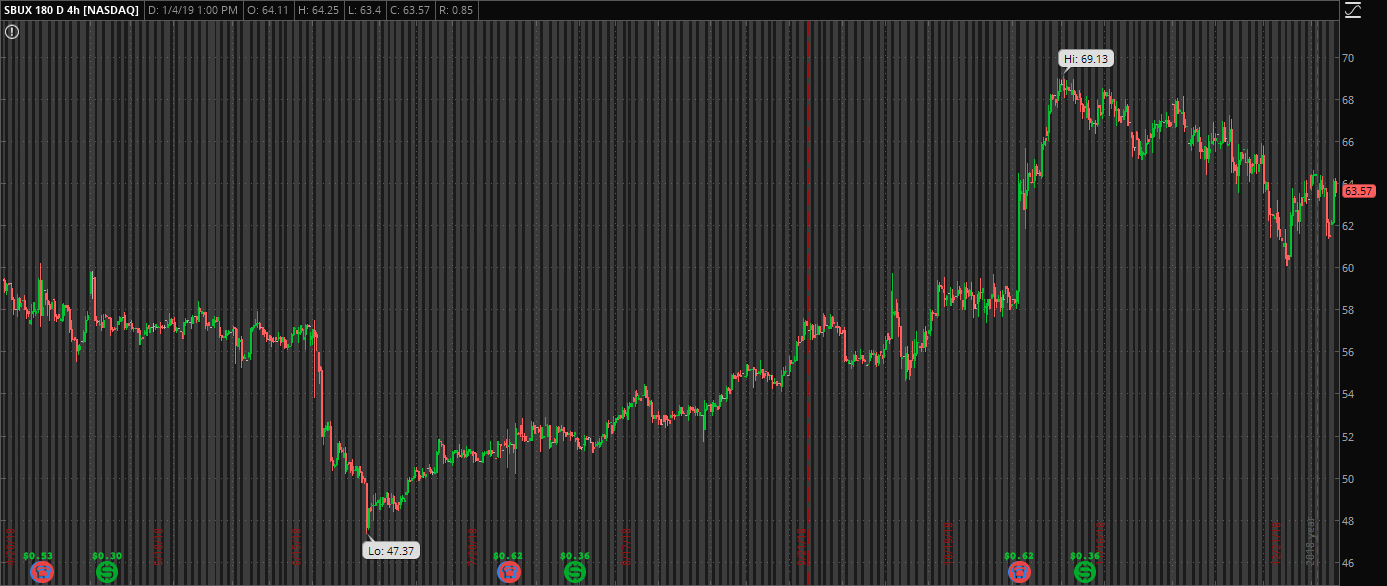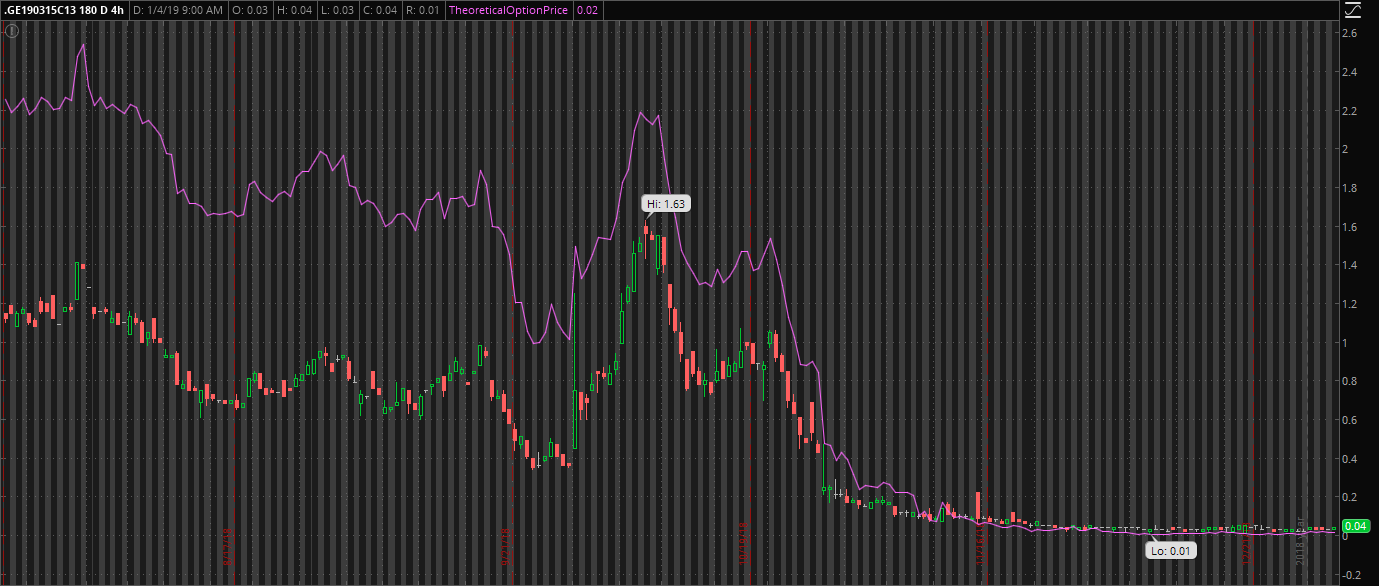Successful trades which failed
January 4, 2019 • 5 min read
I've been trading for almost 20 years now. For the last 4 years my focus has been primarily options trading. I've gone through the standard (and steep) learning curve. The lessons were sometimes painful. Options trades can be quite binary - you make a lot or lose a lot. As a programmer, my brain is wired for binary. I have a tendency to seek the extremes of all or nothing.
I want to explore this more as it often leads me to initially successful options trades which ultimately failed. I plan to write more about my options trades this year. These are as much for me to review my trades as it is to hopefully help other options traders.
As noted, I often end up treating options trades as binary. That is I either make 2x or 3x gains or I ride it all the way to expiration usually resulting in a complete loss. This also takes another form where I structure an options trade so I am effectively risking nothing.
All of this sounds great, right? Well, it is. At least in the beginning. A lot of these trades are good. The problem is my binary brain ruins them. There were clear changes to take profits early or allow the trade more time to play out. Therein lies the rub. While these strategies sound like complete opposites they simultaneously play a role in options trading.
Let's look at two real-world examples where I placed a successful trade. Yet, because I sought perfection, I ended up with a loss.
Spread in Starbucks
I'm constantly in and out of SBUX through both stock and options. After it was beat down from earnings and the CEO swap, it hit my buy point.
I got long through some slightly out of the money November $52.50 call options. To mitigate my risk, I turned this into a calendar spread by selling the August $55 strikes.
Initially this played out well. The stock moved fractionally higher, but mostly sideways. The August strikes expired worthless and effectively lowering my cost basis to roughly 0.5% of my overall portfolio. The position was actually profitable by 25%. It was a successful trade.
Now I had a lot of choices here. Although SBUX was ticking fractionally lower into October, the trade was profitable. Instead of allowing the stock time to choose a direction, I turned around and created another calendar spread for the October $57 strikes. Allowing the trade time was overruled by my inclination to seek perfection by reducing my cost basis to $0.
As it turns out the stock was simply catching its breath before a monumental move higher. In the weeks to follow it moved up 10% before earnings and another nearly 20% after earnings. All of which happened before the October expiration. The initial $52.50 call option would have yielded a 500% return.

Now woulda, coulda, shoulda, I know. But this isn't exactly a hindsight is 20/20 scenario. I had a successful trade. I chose the right stock at the right strikes for the right timeframe in the right direction. Even the initial trade structure using a calendar spread was correct. It lowered my cost basis on a declining stock which had inherent downside risk.
The issue was as SBUX bottomed and my initial calendar spread expired I failed to reassess. Had I considered the new risk-reward ratio it unlikely I would have recreated the second calendar spread. What's more likely is I would have seen then what I saw now, a profitable trade which needed to be given time. Even if the small risk compelled me to still reduce my cost basis, I could have done so by selling a portion of the profitable October calls so I didn't cap potential gains.
Calls in General Electric
I had a rolling trade during 2018 in GE. The strategy was simply to trade its epic journey down. While the chart would lead you to believe that this was a losing trade, it was actually successful. On each slight pop up I would trim my position by selling calls, and then buy more calls at lower strikes after another move down. Although it wasn't exactly a neutral strategy, the repositioning made it feel that way.
My exits were at a quarter position after a 50% gain, then another quarter position at a 100% gain, then the rest at a 200% gain. This was effectively the issue. These milestones were too perfect. They sounded good, but it's just not how the market moves.
By October, I was in the March 2019 $13 calls. My cost basis was $0.82. It already sold a quarter position at $1.23 for a 50% profit and had an automated order to sell another quarter positions at $1.64. On October 9th, it topped out at $1.63 before GE and the market both went straight down. While there is still hope GE may rebound (and it's just that hope), I missed the trade.

The issue here was seeking perfect in the percentage gains. Literally $0.01 would have resulted in order execution and locked in 100% gains. This would have covered the eventual loss of the remaining position and left me with a 50% gain from the initial sell. Instead I now have a 75% (paper) loss. A classic pennywise and pound foolish scenario.
Lessons
Investing isn't easy. Especially not options. But the market does give you opportunities. In both these trades I had multiple opportunities to lock in good profits. Yet, I was seeking perfection. I tried to place trades with zero risk, yet exponential reward. The markets aren't that easy.
So, what were my lessons:
-
You have to continually assess the risk/reward. There will always be risk. It's not that the risk should be zero. It's that the reward should simply be greater than the risk. Ironically, in the case of SBUX had I reassess the risk/reward I would have achieved exponential returns.
-
You have to monitor pricing. The market does move in cycles, but rarely hits marks perfectly. It's much more fluids. Lock in profits when they align with your strategy and market movement, not necessarily when perfectly round numbers are hit.
Find this interesting? Follow me on Twitter for even tips and trades.